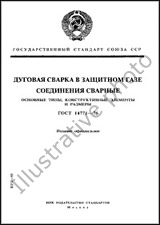We need your consent to use the individual data so that you can see information about your interests, among other things. Click "OK" to give your consent.
ASTM F1356-08
Standard Practice for Irradiation of Fresh and Frozen Red Meat and Poultry to Control Pathogens and Other Microorganisms
STANDARD published on 1.1.2008
The information about the standard:
Designation standards: ASTM F1356-08
Note: WITHDRAWN
Publication date standards: 1.1.2008
SKU: NS-50004
The number of pages: 7
Approximate weight : 21 g (0.05 lbs)
Country: American technical standard
Category: Technical standards ASTM
The category - similar standards:
Annotation of standard text ASTM F1356-08 :
Keywords:
bacteria, cattle, chicken, duck, electron beam, equine, gamma radiation, goat, goose, guinea, HACCP, horse, irradiation, labeling, meat, microorganisms, mule, packaging, parasites, pathogens, pigeons, poultry, processing, sheep, swine, turkey, X-radiation, X-ray, Absorbed radiation dose, Campopylobacter, Food irradiation, Fresh food, Frozen food, Listeria, Pasteurization, Pathogen reduction/elimination, Poultry materials/applications, Pseudomonas, Salmonella, Toxoplasma gondii
Additional information
| Significance and Use | ||||||
|
The principal purpose of irradiation is to control (reduce the number of) pathogenic bacteria in fresh or frozen red meat and poultry to ensure the safety of these foods for human consumption. Irradiation significantly reduces the numbers of vegetative pathogenic bacteria such as Campylobacter, Escherichia coli, Listeria, Salmonella, Staphylococcus aureus, or Yersinia enterocolitica. The process also inactivates parasites such as Trichinella spiralis and Toxoplasma gondii. The process may extend the shelf life of fresh red meat and poultry by reducing the numbers of viable, vegetative spoilage bacteria, such as Pseudomonas species. Radiation processing of fresh and frozen red meat and poultry is a critical control point (CCP) of a Hazard Analysis of Critical Control Points (HACCP) program. It serves as an important measure to control any residual risk from pathogenic microorganisms before the product reaches the consumer. |
||||||
| 1. Scope | ||||||
|
1.1 This practice outlines procedures for the irradiation of fresh or frozen meat and poultry. Note 1—The Codex Alimentarius Commission defines meat as “the edible part of any mammal” and poultry as “any domesticated bird, including chicken, turkeys, ducks, geese, guinea-fowls, or pigeons” (CAC/MISC 5). Note 2—Current U.S. regulations limit the definition of livestock species to cattle, sheep, swine, goat, horse, mule, or other equine and poultry species to chicken, turkey, duck, goose, and guinea (2, 3). 1.2 This practice covers absorbed doses used for inactivation of parasites and reduction of bacterial load in fresh and frozen red meat and poultry. Such doses are typically less than 10 kGy. 1.3 This practice addresses irradiation of pre-packaged product for retail sale or for use as an ingredient in other products. It also addresses the in-line irradiation of unpackaged product. 1.4 This standard does not purport to address all of the safety concerns, if any, associated with its use. It is the responsibility of the user of this standard to establish appropriate safety and health practices and determine the applicability of regulatory limitations prior to use. |
||||||
| 2. Referenced Documents | ||||||
|
Similar standards:
1.7.1986
WITHDRAWN
1.1.1972
WITHDRAWN
1.1.1972
1.1.1972
WITHDRAWN
1.7.1986
1.7.1989
We recommend:
Updating of laws
Do you want to be sure about the validity of used regulations?
We offer you a solution so that you could use valid and updated legislative regulations.
Would you like to get more information? Look at this page.



 GOST 16594-85
GOST 16594-85
 Cookies
Cookies
